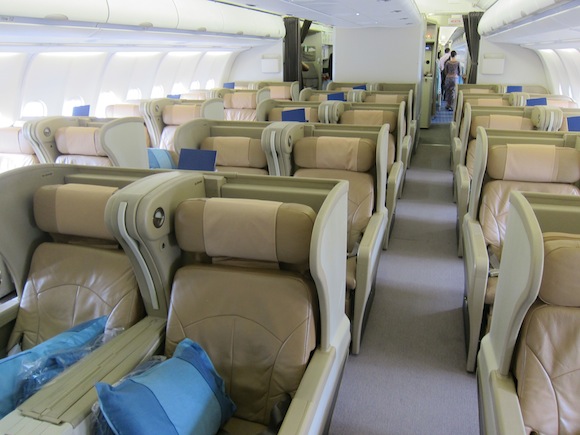

Despite my busy travel plans, I still make it a point to visit the local attractions once in a while, especially when they have new exhibits or when I am showing my foreign friends around.

This year’s Orchid Extravaganza celebrates Singapore’s pop culture with a creative spin on familiar icons, as seen through the eyes of multi-talented Singaporean singer-songwriter Dick Lee.

Melding floral artistry and pop art, the orchid display features landmarks and objects that have become part of local culture. Local icons such as the peacock and Ah Meng – the resident orang utan at the Singapore Zoo. Ah Meng (circa 18 June 1960 – 8 February 2008) was a female Sumatran orangutan and a tourism icon of Singapore. Till date she is still lives fondly in the hearts of many.

From housing to recreation and food, these have been given a playful makeover under the creative direction of Dick Lee and designer Yang Derong, to reflect Singapore’s unique blend of tradition and modernity.

This is a huge bowl of ice kacang. A big part of the Singaporean lifestyle revolves around food. The combination of food from various ethnic groups makes up our uniquely Singaporean cuisine. Hawker centres are a one-stop destination where anyone can get their local food cravings satisfied.

Orchid Extravaganza takes you on a journey of the icons of Singapore with a pop twist as we celebrate the 200th anniversary of Sir Stamford Raffles’ arrival this year. The amalgamation of vivid colours is a celebration of Singapore’s vibrant multi-ethnic society. We saw the traditional Peranakan shophouses of Joo Chiat to the Chinatown gate entrance.




The Dragon Playground at Toa Payoh is yet another icon of Singapore. It was built in 1979. The new dragon design featured a larger head tiled with terrazzo and tiles as well as a body of colourfully-painted steel rings which children could either slide or climb through. The use of terrazzo tiles produced a mosaic aesthetic that remains beloved decades after the dragon playground’s construction.

They stand out amidst a colourful landscape of over 15,000 orchids, comprising more than 80 varieties including heritage orchids such as Aranthera Anne Black, ArandaBertha Braga and Dendrobium Tay Swee Keng.


Singapore’s national flower and the first orchid hybrid from Singapore, the Papilionanthe(Vanda) Miss Joaquim was hybridised by Agnes Joaquim, a horticulturist residing in Singapore. It was selected as the national flower of Singapore for its vibrant colour as well as its resilience and year-round blooming quality.

Shipping plays an important role in the development of the Singapore economy. Currently the world’s second-busiest port in terms of total shipping tonnage, it also trans-ships a fifth[ of the world’s shipping containers, half of the world’s annual supply of crude oil, and is the world’s busiest transshipment port.

As Singapore lacks land and natural resources, we rely heavily on shipping for our consumption and we also make use of exports to boost the economy. As you can see from the container, fruits, meat, iPhones and other products that arrive at our port come in through shipping imports.

Overall, I had an enjoyable time at Gardens by the Bay. I do recommend people to check out the Flower Dome and the Cloud Forest. If you are a frequent visitor to Gardens by the Bay, do consider getting the Friends of the Gardens card. I applied for mine at 50% discount when they were running a promotion, so I paid $34 for one year instead of $68. If you visit the Gardens 3 times in a year, you would have broke even. There are other perks of signing up as it includes 2h of free parking for each visit and some F&B vouchers. Every few months, they would change the main exhibit at Flower Dome to coincide with certain festivals such as Chinese New Year or Christmas, so that it is not so mundane and one can continue to visit the Gardens for more inspiration.


